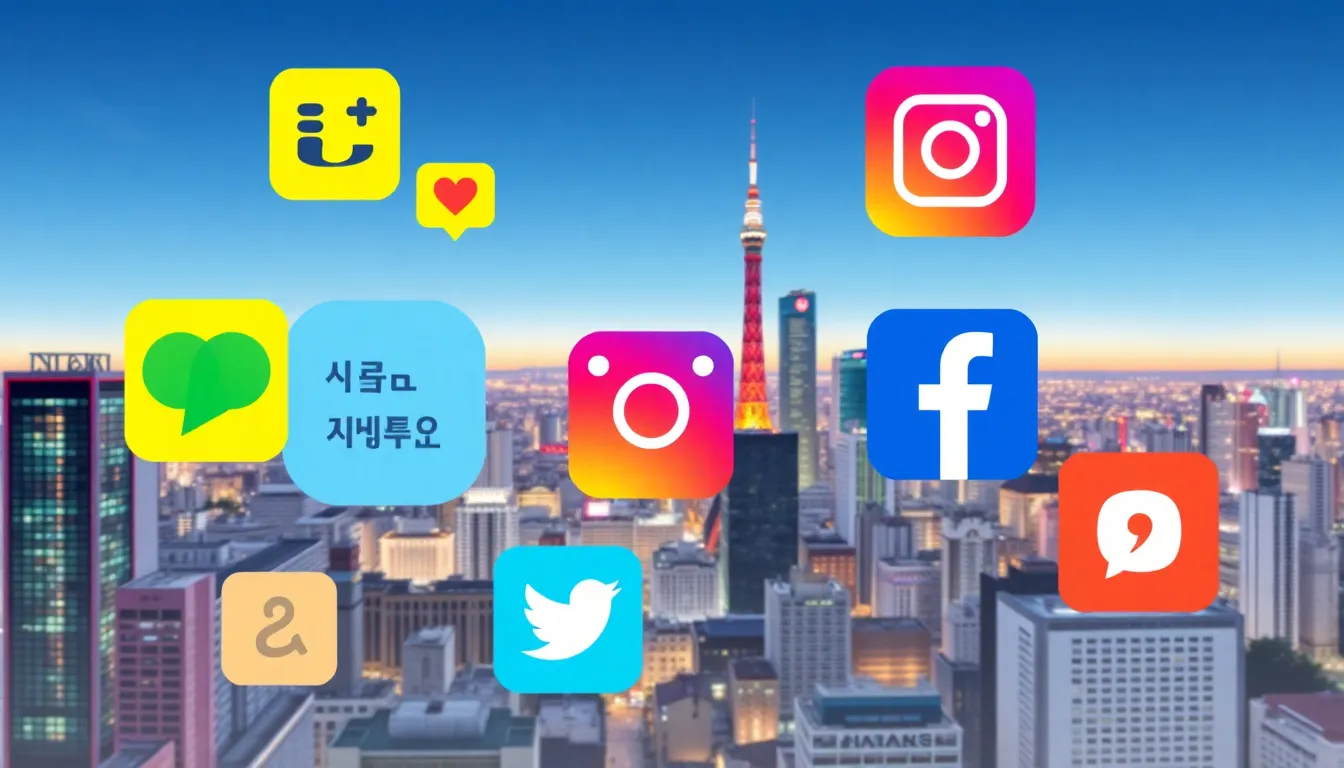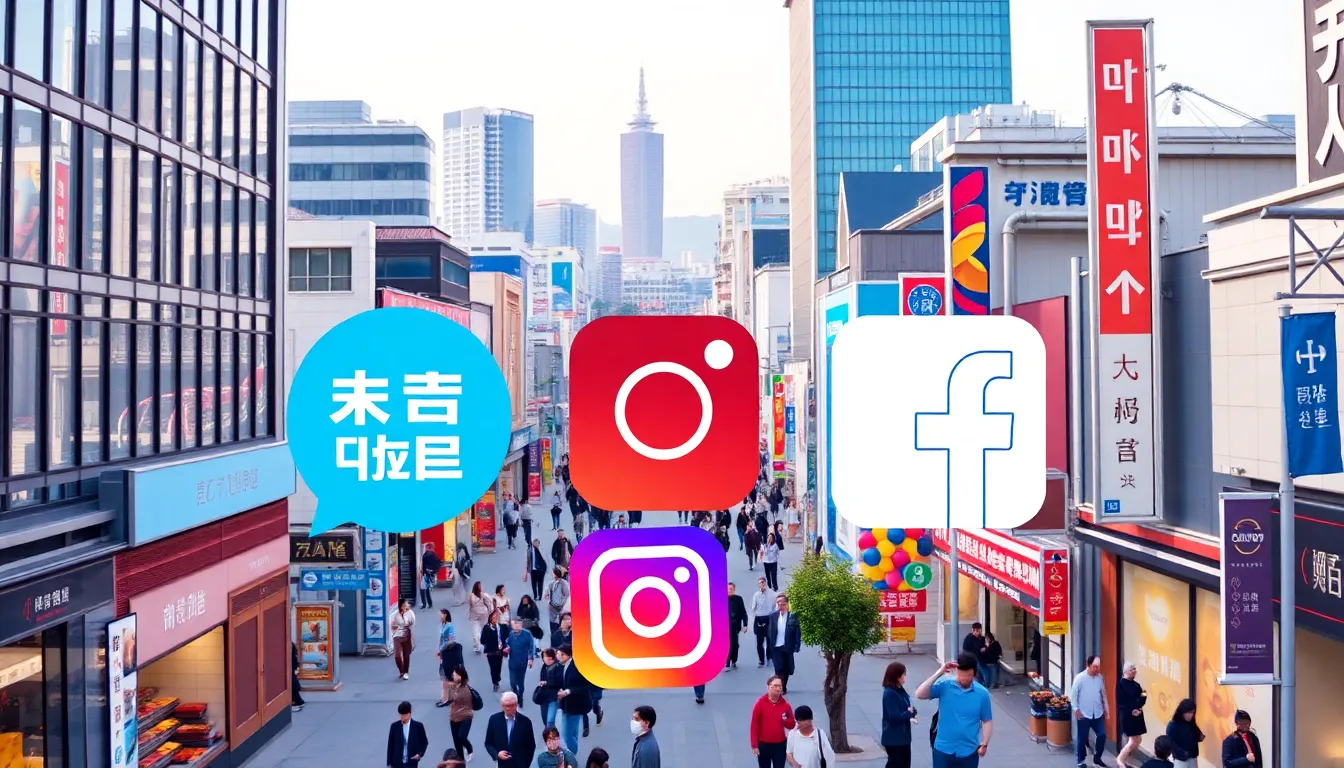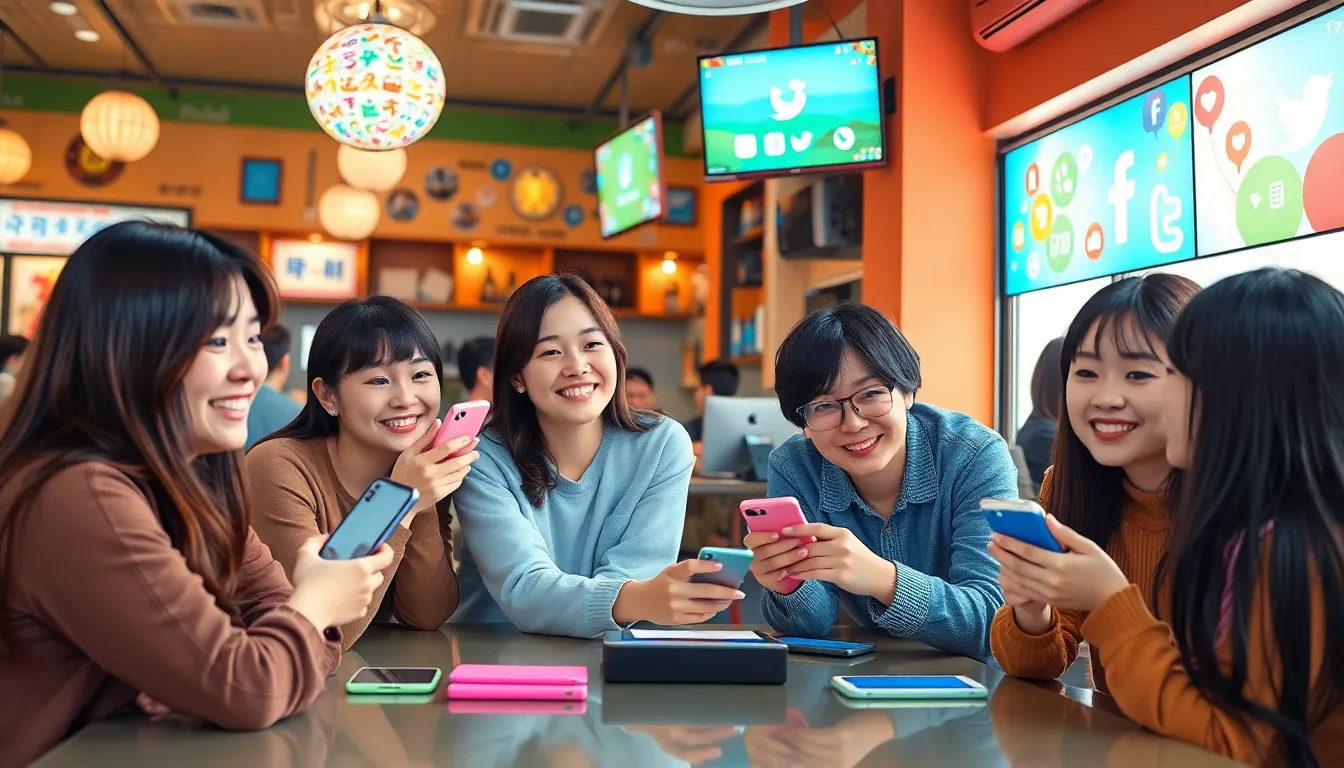Table of Contents
ToggleIn the fast-paced digital world, Korean social media has taken the spotlight, captivating audiences with its unique blend of creativity and cultural flair. From quirky memes to viral dance challenges, it’s a playground where trends are born and spread like wildfire. If you think your social media feed is entertaining now, just wait until you dive into the vibrant universe of platforms like KakaoTalk, Naver, and Instagram, where every scroll brings a delightful surprise.
Overview of Korean Social Media
Korean social media thrives on user engagement and cultural expression. Platforms like KakaoTalk serve millions by facilitating communication and entertainment. Naver blends search engine capabilities with social networking, offering news, blogs, and multimedia content. Instagram captures user creativity through photo and video sharing, allowing trends to spread rapidly.
KakaoTalk features messaging, games, and integrated services, making it one of the most popular apps in South Korea. It supports diverse content types, including stickers, voice calls, and paid services. Naver, known for its user-generated content and search tools, ranks high in daily use among Koreans. Users often rely on it for real-time updates and community discussions.
Instagram significantly impacts trends, especially among younger demographics. Its features, like Stories and Reels, enhance interaction, promoting viral content creation. TikTok also continues to gain traction, with users sharing short videos across a global audience.
Each platform reflects unique aspects of Korean culture. Users engage with challenges, memes, and real-time events that resonate culturally and socially. The interconnectedness of these apps fosters a vibrant digital landscape where creativity flourishes. Overall, Korean social media’s dynamic nature entertains and connects individuals, reflecting contemporary societal trends and cultural shifts.
Popular Platforms in Korea


Korean social media platforms offer diverse features that cater to various user preferences, fueling creativity and connectivity. Below are the most popular platforms shaping the digital landscape in Korea.
KakaoTalk
KakaoTalk dominates mobile messaging in Korea with over 50 million active users. This platform combines messaging with multimedia features, allowing users to send texts, make voice calls, and share videos. KakaoTalk also integrates gaming and payment services, enhancing user engagement and convenience. The platform’s unique features include stickers, customized themes, and group chats, appealing to younger audiences. Through its ease of use and versatility, KakaoTalk stands out as a communication staple in Korean daily life.
Naver
Naver serves primarily as a search engine, yet it offers social networking capabilities that attract millions. With approximately 42 million monthly active users, the platform features blogs, news, and user-generated content. Naver caters to diverse interests through its verticals, like Naver Cafe and Naver Blog, fostering vibrant communities. Its real-time updates and content curation reflect current trends, while users engage through comments and sharing. Relying on its innovative search and social networking elements, Naver plays a crucial role in shaping online discourse in Korea.
Instagram thrives among younger demographics in Korea, boasting approximately 12 million users. The platform emphasizes photo and video sharing, enabling users to showcase creativity through curated feeds. Many influencers and brands gain substantial followings on Instagram, leveraging features like Stories and Reels. These tools significantly promote viral content creation, driving trends and fashion movements. With its focus on visual storytelling, Instagram connects users, fostering a unique online community that resonates with Korean culture.
Facebook continues to be a part of social interaction in Korea, with around 18 million users active on the platform. It allows users to share personal updates, connect with friends, and engage with groups. Many users leverage Facebook for news consumption, participating in discussions that impact societal trends. This platform facilitates events and business connections, making it a valuable tool for professional networking. While it may face competition from newer platforms, Facebook retains a stable user base, influencing online communication dynamics in Korea.
Trends in Korean Social Media
Korean social media showcases evolving trends that reflect cultural shifts and user preferences. Key areas include the rise of short-form video, influencer culture, and community engagement.
Rise of Short-Form Video
Platforms like TikTok and Instagram dominate the short-form video market in Korea. Users share quick, engaging clips that capitalize on challenges, dance routines, and comedy. This format attracts younger audiences, fostering viral trends rapidly. Around 12 million users on Instagram utilize Stories and Reels, proving the effectiveness of short content. Each clip inspires creativity and provides an avenue for self-expression.
Influencer Culture
Korean influencer culture plays a significant role on platforms like Instagram and YouTube. With an increasing number of followers, influencers shape opinions and drive trends. Many focus on fashion, beauty, and lifestyle, resonating with younger demographics. Approximately 50% of Korean social media users engage with influencers regularly. Opportunities arise for brands to collaborate, leading to innovative marketing strategies. As authenticity gains importance, influencers strive to present genuine interactions with their audiences.
Community Engagement
Community engagement thrives on platforms such as Naver and KakaoTalk. Users gather in niche communities to discuss shared interests, from K-pop to gaming. Real-time updates keep conversations lively and relevant, attracting millions to participate. Around 42 million users on Naver create content and engage with others, fostering vibrant discussions. Engaging with audiences strengthens online ties and promotes collaboration. This connectedness enhances the overall social media experience, making it an integral part of Korean culture.
Impacts of Korean Social Media
Korean social media profoundly influences various aspects of society and commerce. It shapes social movements and marketing strategies, reinforcing cultural dynamics and economic trends.
Social Movements
Korean social media plays a pivotal role in social movements, amplifying grassroots activism. Platforms like Twitter and Instagram facilitate real-time communication, enabling quick mobilization of support for causes. The 2016 Candlelight Revolution showcased this potential, with hashtags uniting millions against political corruption. Engaging visually compelling content fosters awareness, drawing attention to significant social issues. Approximately 75% of Korean users actively participate in discussions surrounding social change, illustrating their commitment to advocacy through digital channels.
Marketing Strategies
Korean brands leverage social media to enhance their marketing strategies, targeting specific demographics with precision. Platforms such as Instagram and TikTok offer innovative ways for brands to connect with younger audiences through visually engaging content. Around 93% of marketers in Korea recognize social media as an essential tool for brand awareness. Effective use of influencers amplifies brand reach, as they resonate with followers through authentic endorsements. Companies increasingly invest in tailored campaigns that highlight user-generated content, resulting in higher engagement rates and improved brand loyalty.




